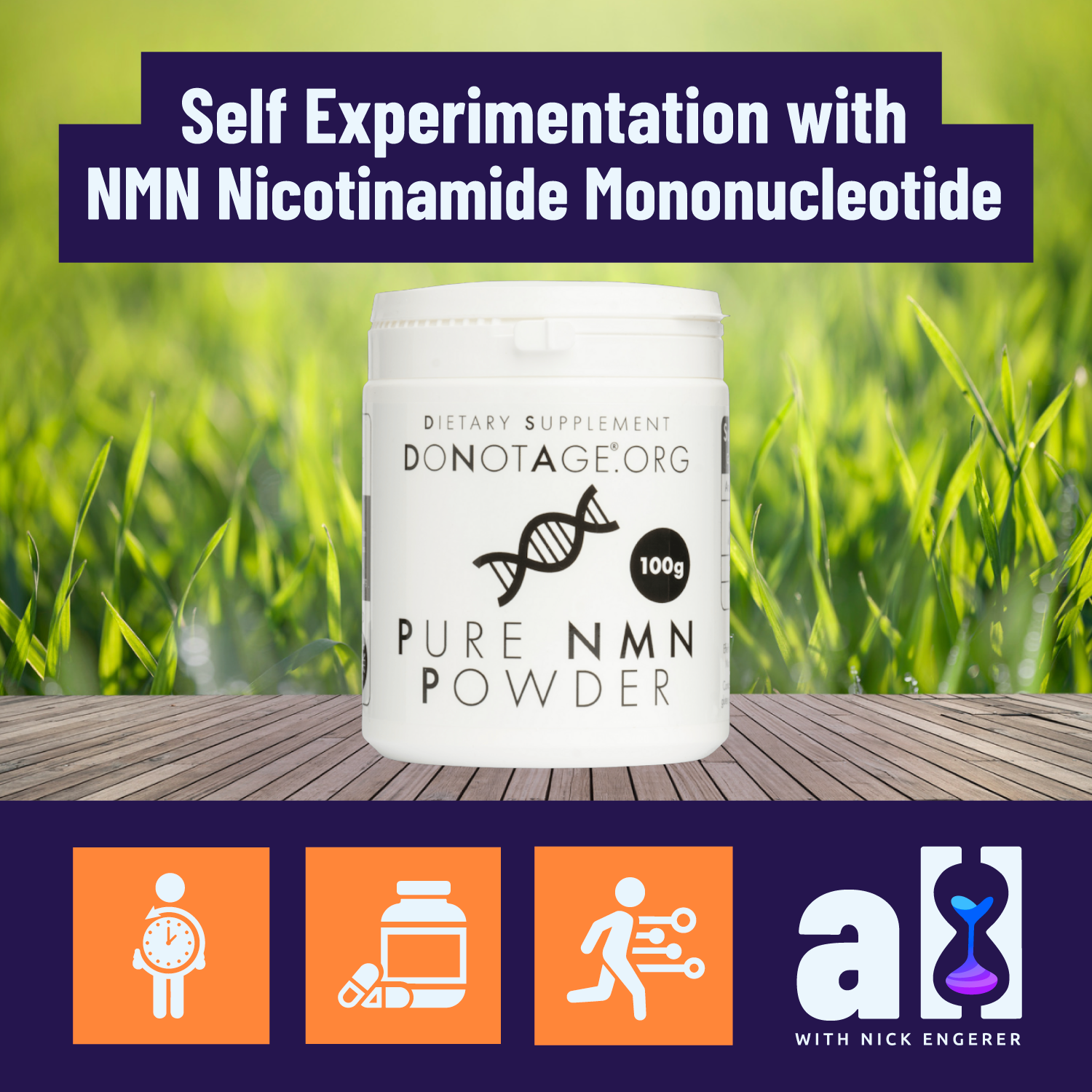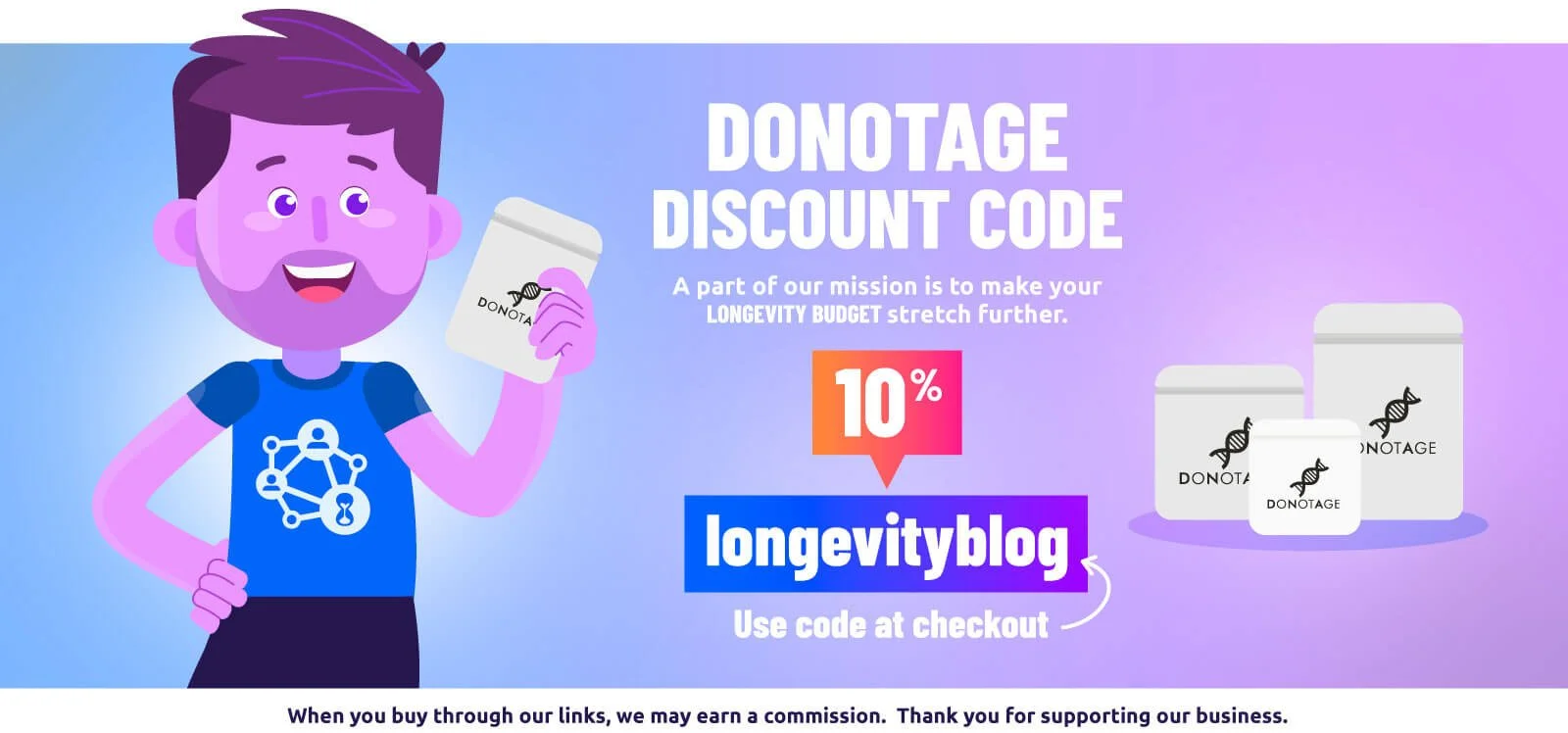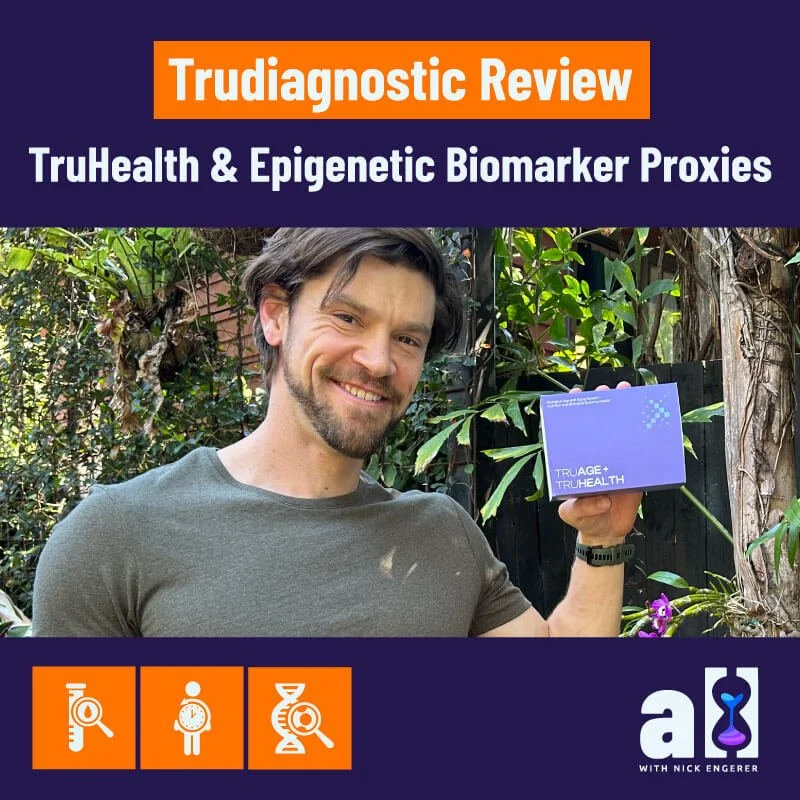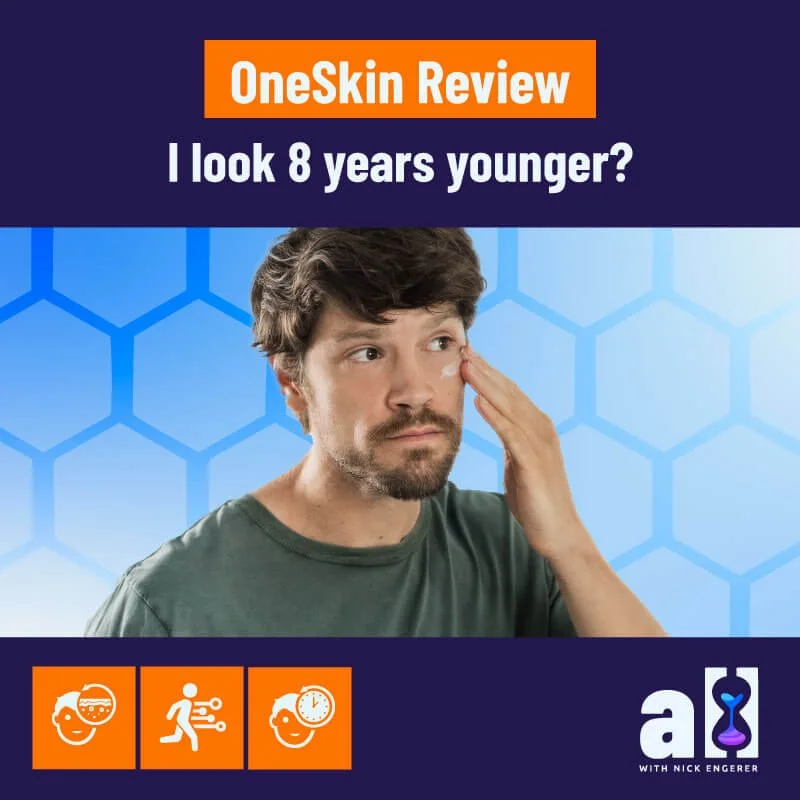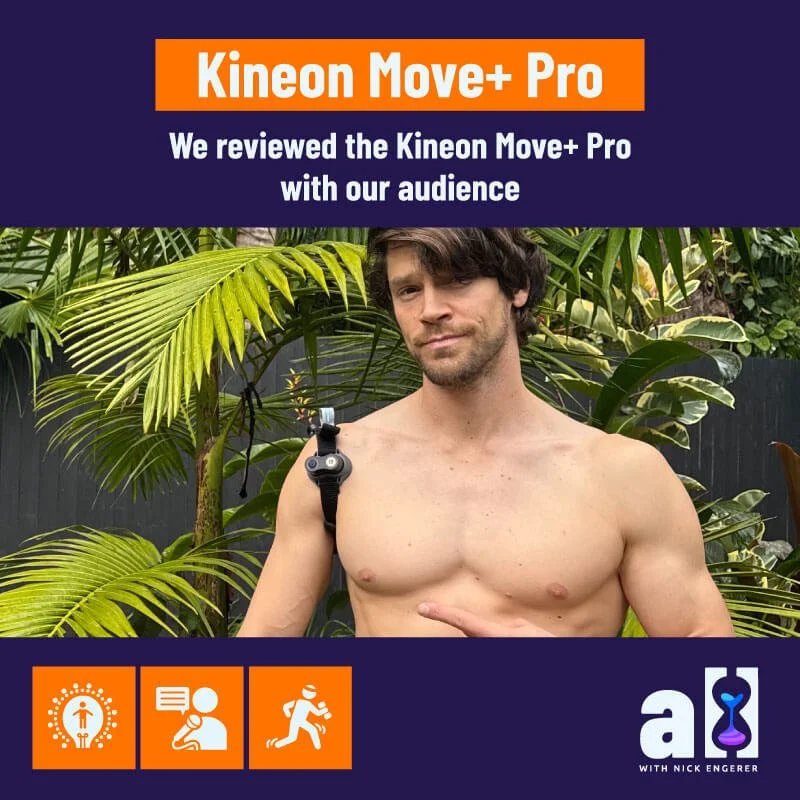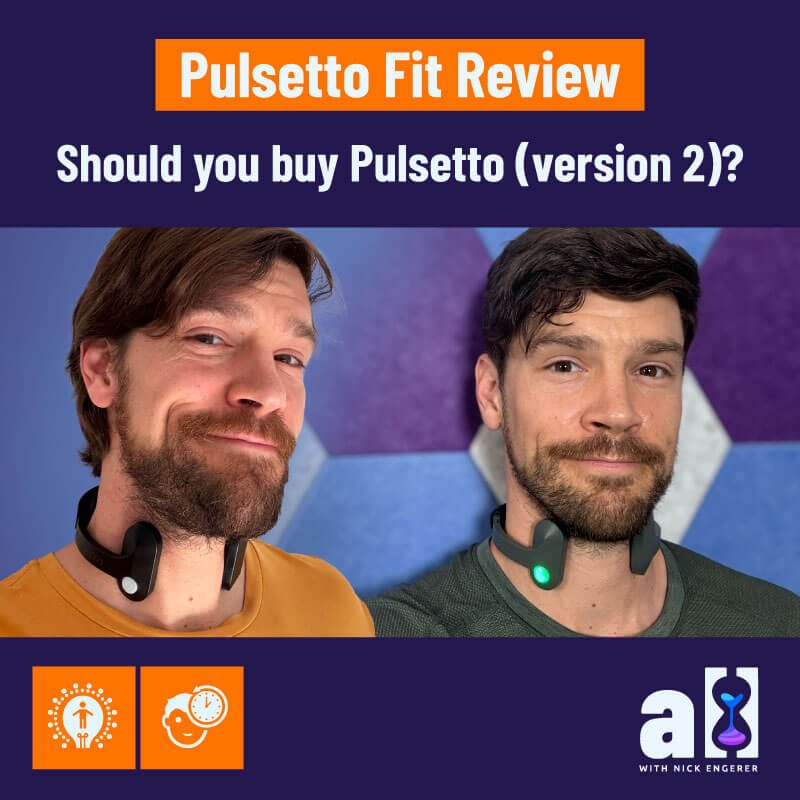Self experimentation with NMN Nicotinamide Mononucleotide
NMN before and after with biological age
Given the introduction of nicotinamide riboside (NR) and more recently nicotinamide mononucleotide (NMN) as supplements over the past four years, many in the longevity community are self-experimenting with these molecules which boost NAD+ levels.
Looking for an NMN supplier? I recommend DoNotAge, who offer a third party tested pure product, have a bulk supply option (100g) with further savings when you subscribe to regular shipments. Use the code ‘longevityblog’ to save a further 10%.
Get the details in Part 3 of this NMN self experiment series
As discussed in the previous post on NMN risk management, there are three key questions that A Longer Life will engage with on the topic of NMN. These are:
NMN
How can we self-experiment to determine efficacy?
In this post, I’ll discuss how we can self-experiment to determine the efficacy of NMN supplementation. Let’s do it!
NMN self experimentation: A first draft “how to” guide
Let’s science this and see what happens
As with any good self-experiment, we should design a solid experimental framework based on the principles of the scientific method.
This has caveats however, owing to our inherent complexity as a biological system.
As you up your self-experimentation game (what a biohacker you are!), you’ll find out that self experiments are:
Difficult to control
Often hard to measure directly
Prone to bias and placebo effect
Important to make repeatable
Through this post and others that follow, we will do our best to continually consider these issues with self-experimentation (an example of this can type of thinking can be seen in previous posts).
In your endeavour to self-experiment with NMN, getting the experiment right is particularly important.
It should be our goal to provide insight to the broader self-experimentation community, and facilitate others to effectively self-experiment so we can benefit from collective knowledge sharing.
So let’s aim to get this right, in the name of science!
NMN before and after, our Hypothesis: What are we testing?
After thorough consideration, I believe our hypothesis for NMN supplementation can be summarised as follows:
NMN supplementation will boost intracellular NAD+ levels
Boosting NAD+ levels with NMN will measurably improve select characteristics of youthfulness
This hypothesis is formed upon on a large volume of work around NAD+ boosting supplements such as Nicotinamide, Nicotinamide Riboside (NR) and NMN (nicotinamide mononucleotide), which indicate 1) the importance of NAD+ levels on a plethora of cellular processes, 2) the known decline of NAD+ levels with age and 3) the apparently causal relationship in this drop in NAD+ levels with a wide array of age-related diseases.
It also formulated in such a way that we can test it, by gathering related data and analysing them to draw conclusions.
Does NMN work in humans? How we can test the hypothesis:
In order to test our hypothesis, we need to determine:
An appropriate NMN dose for raising NAD+ levels
How we will measure the NAD+ levels
What controls we can apply, and adopt defensive positions against bias/placebo
 |
How much NMN should you take?
In order to determine the appropriate dose for the experiment, I suggest we look to the two FDA approved clinical trials which are currently evaluating NMN safety and efficacy:
You can search for clinical trials on any topic you like at clinicaltrials.gov
Clinical Trial #1: Dosing for participants 40-65 years olds set at 300mg/day
Clinical Trial #2: Dosing for post-menopausal women set at 250mg/day
Anecdotes from elsewhere suggest this a good level for supplementation. Consider this 27 year old who was totally ‘buzzed’ on 500mg/day and this discussion thread for a 34 year old (same age as me at the time of writing) settling on ~250mg day.
Setting the NMN supplementation level should be done based on age and moderated based on one’s experience with the dose (e.g. insomnia, flushing, etc can be inferred to mean one should titrate downwards).
Measure: Data collection for the NMN self-experimenter
From first principles, our goal here will be to measure related biometrics before NMN supplementation, and then again after sustained NMN supplementation. However, the details here are challenging. As, unfortunately sampling intracellular NAD+/NADH levels presents a few issues.
So for widespread, democratised access to NAD+/NADH testing, we face these two barriers:
First, direct testing of NAD+/NADH is limited to professional assay test kits (like this one)
This violates our goal to make the experiment repeatable for other self-experimenters.
Secondly, it turns out they are fairly ‘noisy’ data anyway, making interpretation difficult and making representativeness of the measurement problematic
NAD+/NADH levels change dramatically across the day with activity, eating, circadian rhythm (Interestingly, blood glucose exhibits these same characteristics; which is perhaps unsurprising as they are both part of our body’s ‘energy system’ );
even if we could test it directly, we would also need to sample it semi-continuously (many measurements)
However, given the widespread interest, research funding and commercial development of NAD+ boosters, measuring NAD+/NADH is likely to become more widely available in the near future. My research found at least two promising options,:
Liquid chromatography - “high-performance liquid chromatography (HPLC) to accurately measure the levels of NAD+ in cells and tissues”
A bioluminescent biosensor - “for the rapid quantification of NAD+ levels in biological samples, which can be used either in laboratories or at the point of care”
Establishing an NAD+ proxy
In science, where we can’t measure something directly, we use a suitable proxy. In atmospheric science, to study the past climate, we can use bubbles captured in glacial ice cores to estimate past CO2 concentrations and global temperatures.
Climate researchers do this because they inconveniently didn’t have thermometers sampling the atmosphere 100,000 years ago. Here, our issue is we don't have the ‘thermometer’ for NAD+/NADH levels yet. So what’s our proxy?
I have spent many hours researching and considering this. It is my suggestion is that we leverage several different biomarkers that are representative of youthfulness as our proxies. The reasoning for this reaches back to the hypothesis and the purpose of boosting NAD+ : to restore youthfulness.
There are a few proxies we can draw from the clinical trials mentioned above, these are:
Walking speed tests
Blood pressure
Lipid profile
I suggest we eliminate the walking speed test, as it is really only valuable in advancing aging or for sedentary individuals. The latter three are widely accessible, so we’ll adopt them.
But I suggest we go a bit further in our assessment of expressing a youthful phenotype, and adopt measurements of biological aging. My reasoning for using biological age (BA) is the following:
BA is our target for longevity optimisation
BA measurement and calculation is accessible to others, therefore can be repeated
BA is a wide reaching measurement of overall bodily youthfulness (that is its purpose)
BA has multiple modes of testing available to us; so we can work with more than one
Epigenetic test kits for before and after the A Longer Life NMN based planned biological age reversal experiment. Read about what I made this choice!
For the NMN self-experimenter, I suggest the following two biological age computation methods.
The first is the Phenotypic Age test, which I cover in this post.
The second is a biological age test based on measurement of DNA methylation (aka epigenetic age)
While the prior test is a blood test, the latter is direct measurement of methylation at CpG sites in the epigenome.
There is a fundamental connection here between NAD+ levels, which are the ‘fuel’ for the SIRT enzymes which repair DNA and regulate expression of the genome.
In theory, increasing NAD+ levels could improve our bodily ability to regulate the epigenome, so potential improvements could be realised in the epigenetic age.
Epigenetic age kits are also becoming widely accessible very quickly, and therefore are repeatable.
Analysis: How should the self-experimenter analyse their data?
At the most fundamental level, at the very least, one should statistically compare the before & after measurements of our proxy measurements.
An added benefit would be the inclusion of additional baseline measurements from before the experiment begins.
This inherently needs to include some basic corrections for the non-stationary nature of the data. In layperson terms - chronological time is passing over our measurement period.
So the ‘after’ measurements should be corrected in our analysis, considering the amount of time that has passed over the course of the experiment.
Lastly, and perhaps more importantly, we must employ purposeful management of potential confirmation bias.
Anyone who is running an NMN self-experiment and is looking after their longevity wants and likely expects the supplement to work.
Since we know the result we want, therefore we need to be defensive against our bias when we draw conclusions based on this result.
This is particularly relevant for bloggers and social media focussed folks - we inherently want the Ben Greenfield headline to draw clicks and eyeballs.
I refuse to do that to you, and will revisit these issues when we analyse the data and draw our conclusions.
NMN Self-experimentation: What’s next for A Longer Life?
We’ve nearly designed our experimental framework, but we’ve not yet discussed the dosing protocol. So here’s what I personally plan to do:
Baseline
Measurements of:
Blood lipids
Blood pressure
Estimation of:
Phenotypic Age (established here)
Epigenetic Age (via Chronomics)
Complete the SF-36 questionnaire
Post Protocol
Measurements of:
Blood lipids
Blood pressure
Estimation of:
Phenotypic Age (established here)
Epigenetic Age (via Chronomics)
Complete the SF-36 questionnaire
So, what will the exact dosing protocol be? It is still in draft form, as I am awaiting potential additional insights from first Chronomics test.
These may provide additional insights on what to add to the protocol to further improve my biological age.
This does step outside of the experimental design for NMN self-experimentation, but let’s delay that discussion until further posts.
NMN self-experimentation protocol (DRAFT):
NMN dose will be set at 250mg per day (based on clinical trial dosing levels)
Update: Two months into the protocol, I raised to 500mg per professional advice from a knowledgeable third-party
For risk management, we’ll include 1:1 TMG (as discussed in my last post)
Resveratrol at 500mg/day, taken with a high fat meal (I’ve been doing this for 2+ years)
Inclusion of Resveratrol is based on its role as a SIRTuin activator, which pairs well with NAD+ boosting and potential benefits to the ‘health’ of the epigenome
Will you experiment with NMN? You’ll need a trusted supplier - I recommend DoNotAge, who offer a third party tested pure product, have a bulk supply option (100g) with further savings when you subscribe to regular shipments.
Use the code ‘longevityblog’ to save a further 10%.
Get the details in Part 3 of this NMN self experiment series
FDA & TGA DISCLAIMER
This information is intended for educational purposes only and is not meant to substitute for medical care or to prescribe treatment for any specific health condition. These blog posts are not intended to diagnose, treat, cure or prevent any disease, and only may become actionable through consultation with a medical professional.


